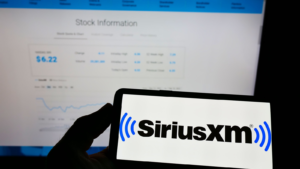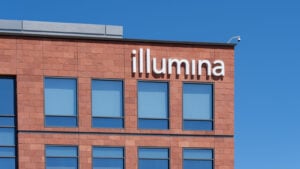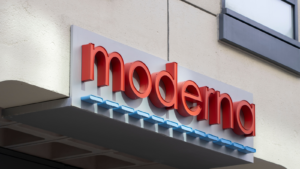One knock against Wall Street analysts is they’re too bullish, especially when it comes to Nasdaq 100 stocks. No matter the market conditions, they seem able to find the silver lining. There are very few “sell” recommendations, with most stock endorsements being a “buy” or “strong buy.” Yet maybe they’re seeing something through those rose-colored glasses they wear.
Nasdaq 100 stocks are down 4% from recent highs in July but was technically in a correction toward the end of October. The tech-heavy index recently jumped higher on news from the Federal Reserve regarding interest rates, so there is good reason to see the positive side of things.
History suggests that a bull market eventually erases every double-digit decline in the stock market. Also, we measure bear markets in months while bull markets are measured in years. So analysts have good reason to see the bright side of Nasdaq 100 stocks.
Naturally, exuberance can be taken to an extreme. Sometimes caution is warranted. What follows are seven Nasdaq 100 stocks that Wall Street believes can soar as much as 367%!
Sirius XM Holdings (SIRI)

Satellite radio operator Sirius XM Holdings (NASDAQ:SIRI) has not been kind to investors since the turn of the century. Shares occasionally spike higher, only to give up all the gains and then some.
We saw that this past July when they suddenly surged 40% higher in one day on a short squeeze play only to plunge lower immediately afterward.
At $4.71 per share as of this writing, Sirius stock is down 41% from that peak. That hasn’t stopped analysts from expecting good things still from the satellite radio star. The consensus estimate for Sirius is $7 per share, which implies a possible 50% return over the next year. On the high side, one analyst pegs it as an $8 stock, or nearly double where it sits today.
While advertisers have been cautious, business is coming back. Sirius already booked more advertising in the first three quarters of 2023 than it did for all of 2022. Subscriptions grew to 34 million at the end of September while customer churn remains very low at 1.6%.
Sirius is also expanding the availability of its 360L audio platform by making it available to more OEM vehicle manufacturers.
And then there’s the rumored merger with Liberty Media (NASDAQ:LSXMA)(NASDAQ:LSXMB)(NASDAQ:LSXMK) which already owns 83% of the company. There is uncertainty still about the combination, but it would bring Sirius fully under its corporate umbrella. The Liberty tracking stocks for Sirius would be combined with the satellite radio operator and then spun off into a new company.
Complexity always creates doubt, but a successful merger and its turnaround plan gaining traction could allow Sirius XM Holdings to soar, which is why it’s one of the Nasdaq 100 stocks to buy now.
Walgreens Boots Alliance (WBA)

Ailing pharmacy chain Walgreens Boots Alliance (NASDAQ:WBA) has also been on a long slide lower. Not just this year, but over at least the last decade.
It lost two-thirds of its value over that time but is down 50% from its recent 52-week high. There are a lot of reasons behind Walgreens’ slow death spiral, but the current slump surrounds the pharmacy’s decision not to sell its U.K. operations or its beauty care business.
It encouraged investors that Walgreens intended to focus on its domestic healthcare business. However, when the pharmacy reversed course and said it would not sell the Boots chain or No7 Beauty, they sold off the stock.
Yet keeping its eye on the U.S. healthcare market remains a priority for Walgreens. It owns almost two-thirds of Village MD, expanding its reach into primary, specialty care, and urgent care. And in January Village MD bought Summit Health, which owns CityMD. The $9 billion deal created one of the largest independent provider groups in the country.
That could be why analysts see Walgreens Boots Alliance having 96% upside. Even if it doesn’t get that high, the pharmacy’s 9.2% dividend yield buoys investor portfolios. Walgreens is the highest-yield Dividend Aristocrat and one of the Nasdaq 100 stocks worth holding onto while waiting for the turnaround to materialize.
Illumina (ILMN)

Genetic testing outfit Illumina (NASDAQ:ILMN) was something of a market darling ever since its IPO in 2000. The sheen wore off in 2021, however, after Illumina defiantly acquired cancer test maker Grail for $7.1 billion despite regulatory objections.
The case is ongoing as Illumina challenges the European Union’s demand it divest Grail, but its CEO also subsequently resigned and the board faces a proxy fight and lawsuit from billionaire investor Carl Icahn.
With all those clouds hanging over Illumina’s head, it’s surprising analysts have a $259 per share price target on the stock. That suggests the genetic testing company could see shares surge 130% over the next year.
Illumina has a new management team and plenty of money to pay the $453 million in fines the EU proposes. It is planning to launch a new flow cell for its latest gene sequencing machine. The NovaSeqX is off to a strong start with 10% penetration across its 1,000 or so existing customers.
It is also introducing two new sequencing kits usable with existing hardware. Although China has seen slower than expected growth, Illumina is also entering the India market where there is significant growth potential.
It won’t be a quick rebound, but the worst could be behind the genetic testing company. Illumina may just be able to achieve Wall Street’s goals.
Moderna (MRNA)

Investors might be surprised to see Moderna (NASDAQ:MRNA) shares fell 55% from recent highs. But Wall Street is convinced the biotech can recover the luster it held during the Covid pandemic. Analysts have a $222 per share one-year price target on the stock, indicating they think it can more than triple in value.
It looks like another tough slog. In financial results just published, Moderna posted a quarterly loss of $3.63 billion, or $9.53 per share. Half of that was from trashing expiring unused Covid-19 shots. It’s also scaling back vaccine manufacturing. People don’t feel the same need to vaccinate or get boosters as they did during the pandemic.
However, the biotech said it expects to launch a vaccine in the U.S. next year to protect against respiratory syncytial virus. It is one of the key products Moderna is developing to jumpstart sales next year. That will put it in competition against GSK (NYSE:GSK) and Pfizer (NYSE:PFE). However, its RSV vaccine is 82.4% effective against the disease while Pfizer’s fell to 78.6% and GSK’s slipped to 84.6% from 94%.
As low as Moderna has fallen, investors might be just as surprised as it rebounds on better performances.
JD.com (JD)

Chinese online marketplace JD.com (NASDAQ:JD) still suffers from the crackdown Beijing launched into tech stocks. While those investigations are winding down, China’s economy is slowing.
There is also significant geopolitical turmoil weighing on the stock, particularly as the U.S. and China spar over trade, Taiwan, and more recently, the Middle East.
China is no longer seen overtaking. Economists see China’s gross domestic product (GDP) slowing to 3.5% growth in 2030 and to 1% by 2050. Still, China is massive and its people want to spend. JD.com hosts the Chinese midyear shopping spectacle known as 618 (June 18).
First launched in 2004 to celebrate the retailer’s founding, this year’s extravaganza ran for several weeks through mid-June. JD didn’t pin a dollar figure on sales, but did say it was a record.
Wall Street is looking for JD’s stock to soar to around $85 a share, a 214% increase from where it trades today. While the stock is down 60% from its January peak, making up a lot of the lost ground seems possible
Enphase Energy (ENPH)

It’s been a long road lower for residential solar inverter leader Enphase Energy (NASDAQ:ENPH). The solar market is cyclical at best, and Enphase looks like it’s in one of the downward swings.
Shares are off 77% from its 52-week high. The good news is Wall Street thinks it can shine again very soon. Analysts set a $316 price target on the stock, or 300% above its current level.
Enphase is one of just two dominant manufacturers of residential inverters and has a 50% share of the market. SolarEdge Technologies (NASDAQ:SEDG) is second with a 40% share and Tesla (NASDAQ:TSLA) is a distant third at 5%. Inverters convert the direct current (DC) produced by solar panels into the alternating current (AC) used in homes.
After a difficult 2022, the U.S. solar industry is expected to rebound this year. Analysts forecast a record 32 gigawatts of production capacity will be added in 2023. They estimate operating capacity to grow from 153 GW today to 375 GW by 2028 as Covid-era supply constraints fade.
That bodes well for Enphase, but persistent inflation and high interest rates conspire against consumers adopting solar. Solar energy systems cost a lot of money, and financing them become uneconomical in the current environment.
Despite that, Enphase is holding the line on pricing. It’s why the inverter leader says it is maintaining margin guidance north of 40%. It’s a plan with short-term pain, but possible long-term gain.
As it expands internationally gives it greater reach and softens the blow of any regional weakness. It might get uglier before it looks better, but investors should have a long-term outlook anyway.
On the date of publication, Rich Duprey held a LONG position in WBA stock. The opinions expressed in this article are those of the writer, subject to the InvestorPlace.com Publishing Guidelines.
Biotech, Consumer Discretionary, E-Commerce, Automotive, Electric Vehicles, Energy, Healthcare, Retail, Renewable Energy, Solar, Communications, Media, Streaming
